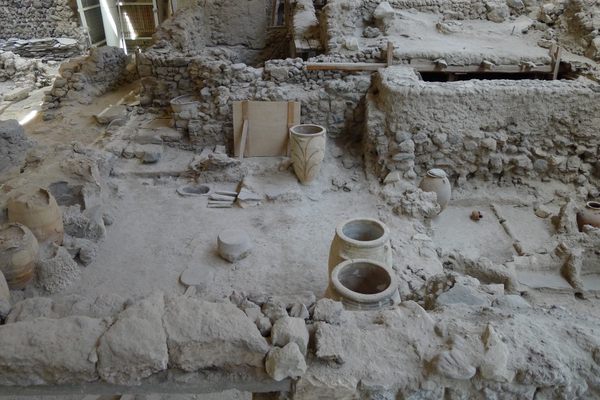How Scientists Are Using Tree Damage to Measure Storm Surge

Cyclone Winston. (Photo: NASA/Wikimedia)
A deadly cyclone tore through Fiji on Saturday and early Sunday, leveling buildings and killing at least 29. The cyclone, dubbed Winston, was said to be the most powerful storm to ever hit the country, with wind speeds at landfall reaching up to 177 miles per hour.
Images captured by the New Zealand Defense Force show the devastating aftermath of the storm, including flattened buildings, toppled trees, and scattered debris. Those photos also indicate the level of storm surge brought on by the cyclone, which in some cases could’ve been up to 10 feet, according to Hal Needham, a storm surge scientist.
The storm surge—a combination of rising water and crashing waves—ripped the bark from numerous trees, many of which were also felled because of “windthrow.” In a post on WXShift, Needham used photos of trees that remained standing to approximate how high the surge had been, looking at color contrasts to determine where bark on the trees is missing.
Photos of trees provide evidence of 10ft (3m) storm surge in #Fiji https://t.co/NP04m9tZ2D #Winston #TCWinston pic.twitter.com/rlF5YRuWbv
— Hal Needham (@Hal_Needham) February 22, 2016
Storm surge is typically measured in one of three ways: at tide stations, with temporary pressure sensors, or by measuring high water marks, as Needham is doing. It isn’t clear if the latter two methods were used in Fiji, though the National Weather Service says that measuring watermarks is the best way to judge storm surge at its highest.
Fiji is home to over 900,000 people and includes dozens of islands. Rescuers were continuing their efforts Tuesday, but were having trouble communicating with some islands in the archipelago. A number of countries have promised aid.
“The imagery is heartbreaking,” Alice Clement, a spokeswoman for UNICEF, tells the AP. “You’re looking down and expecting to see a village and instead you’re seeing a field of debris.”














Follow us on Twitter to get the latest on the world's hidden wonders.
Like us on Facebook to get the latest on the world's hidden wonders.
Follow us on Twitter Like us on Facebook